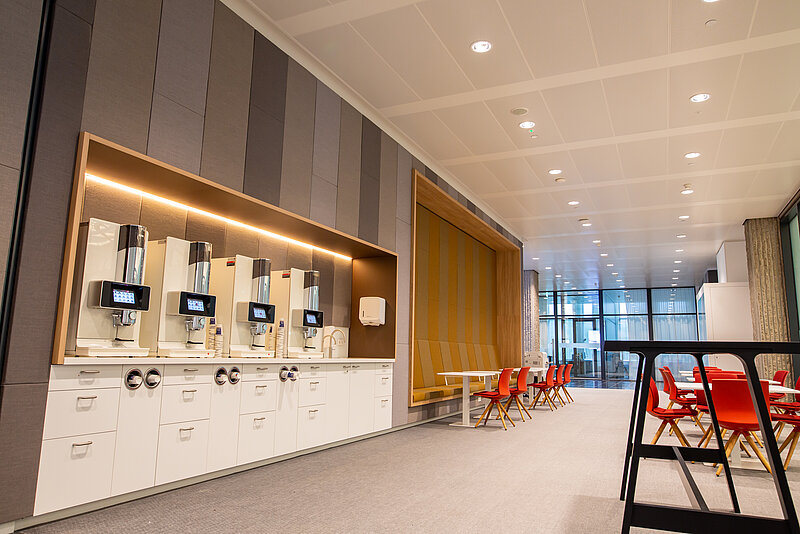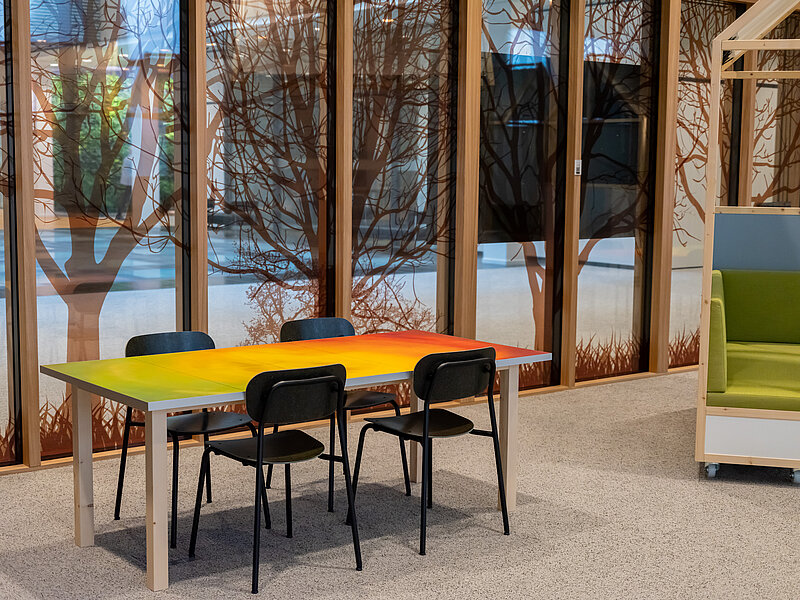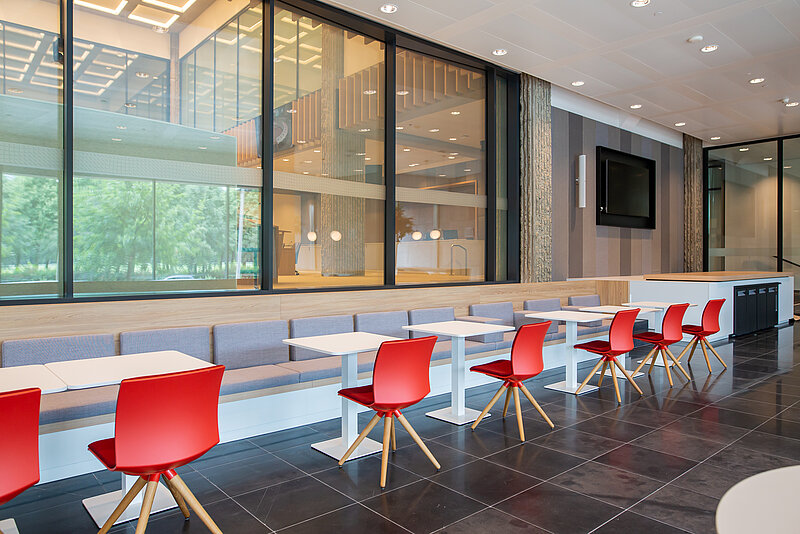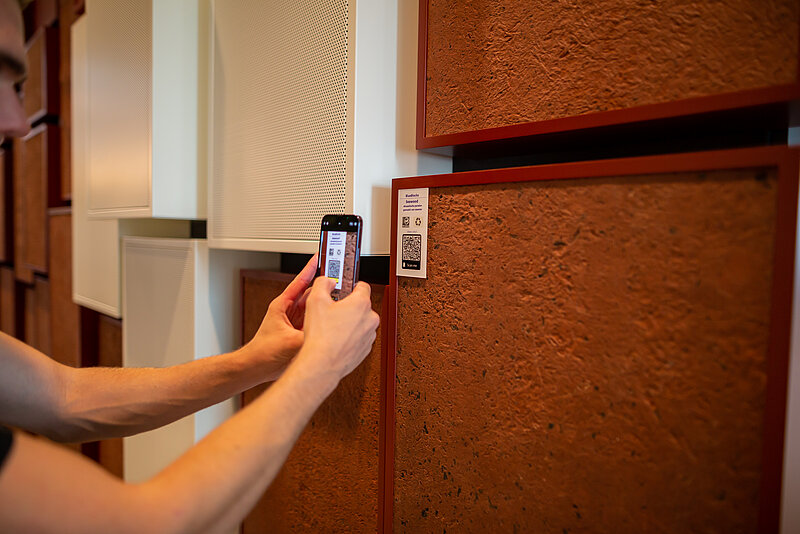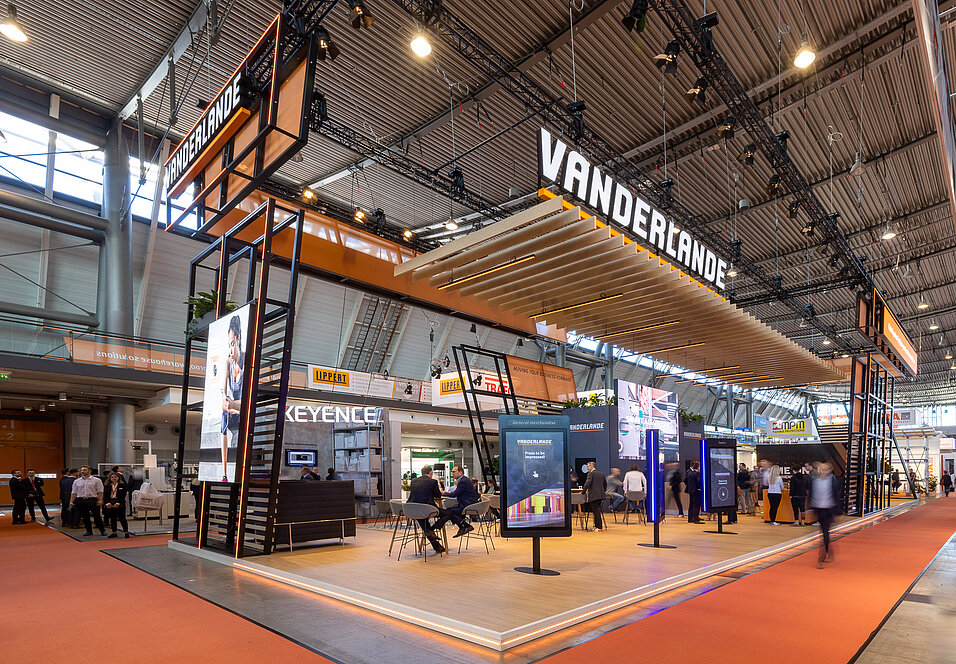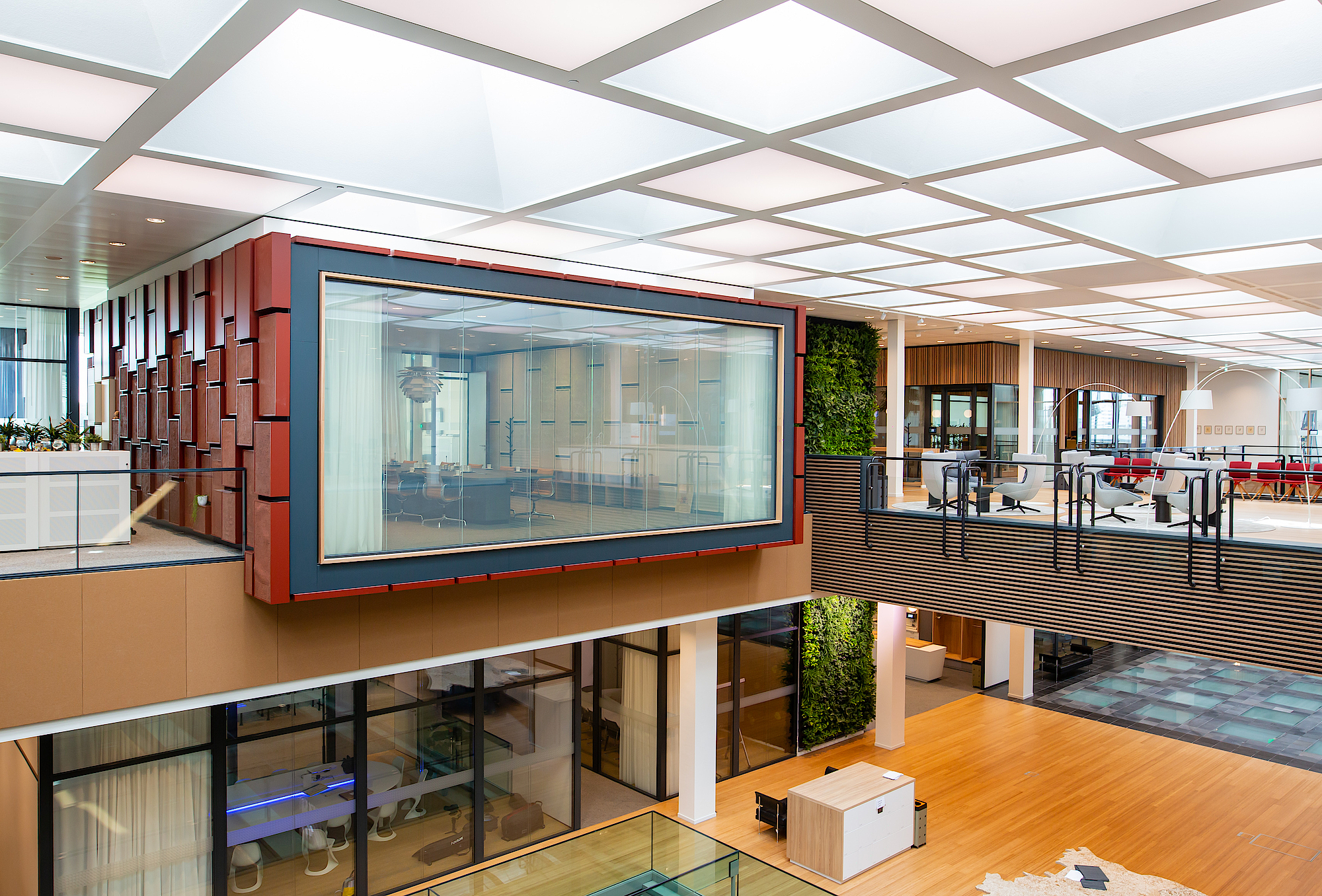
The renovation and sustainability push of the Province of Zuid-Holland (PZH) administration building has been an exceptional project, that we worked on with terrific dedication. We realized custom-fitted furniture, including various wall finishes and acoustic solutions. Through collaborating creatively, we conquered the challenges we encountered. And what an absolutely breathtaking and sustainable result this has delivered.
The challenge
The ambitions for sustainability for this project were high from the start, which explains why we got on board with such enthusiasm. As the lengthy project progressed, additional wishes were added: more attention for a healthier working environment, more use of circular and bio-based materials. Logical requests, the pandemic had raised new awareness after all. But how to best incorporate these wishes, as the functional and aesthetic frameworks had been determined at the start? And what are the knock-on effects for availability, processability and budgeting?


The concept
The solution lay in a creative collaboration with the PZH organization. Our goal was to keep the environmental burden as low as possible. And simultaneously answer both the initial and subsequent requests. Several studio sessions later, we opted to employ the environmental cost indicator method. Calculating the environmental burden for all material choices empowered us to take balanced decisions.
The weighing up is visible everywhere, for example in choice of lumber. We chose to use elm, which grows locally. Through sourcing materials in the immediate proximity, we save on transport, which is automatically favorable for the environment. During assembly we considered the future: we ensured that materials were simple to disassemble and separate. So that, in the future, five times the volume of raw materials can be recycled and reused in comparison with traditional construction techniques.
The result
Intensive collaboration created a breathtaking and sustainable administration building that is pleasant to meet and work in. But really how sustainable is this renovation if we look at the customized furniture? To gain an insight here, the results from the environmental cost indicator method were calculated. That produced a score, expressed in euros, that encapsulates all the environmental effects. On average (per piece of furniture, when compared to a traditional furniture unit), we saved €2,110.50 on environmental impact.
To provide a clearer picture of what this abstract number means in practice, we have converted the reference. Measured in CO2 emissions, the saving is equivalent to thirteen return flights from Amsterdam to New York. In terms of energy savings, 126 homes could burn their lights for a whole year. And nine households could shower for a year from the water savings. These results are displayed in the building as an infographic. This provides the building’s users and visitors an insight into the sustainable nature of the project that we worked so hard on together.
Architect: OTH Architecten and Kraaijvanger Architects
Partners: iungo-adviseurs, LBP|Sight and Stevens Van Dijck

